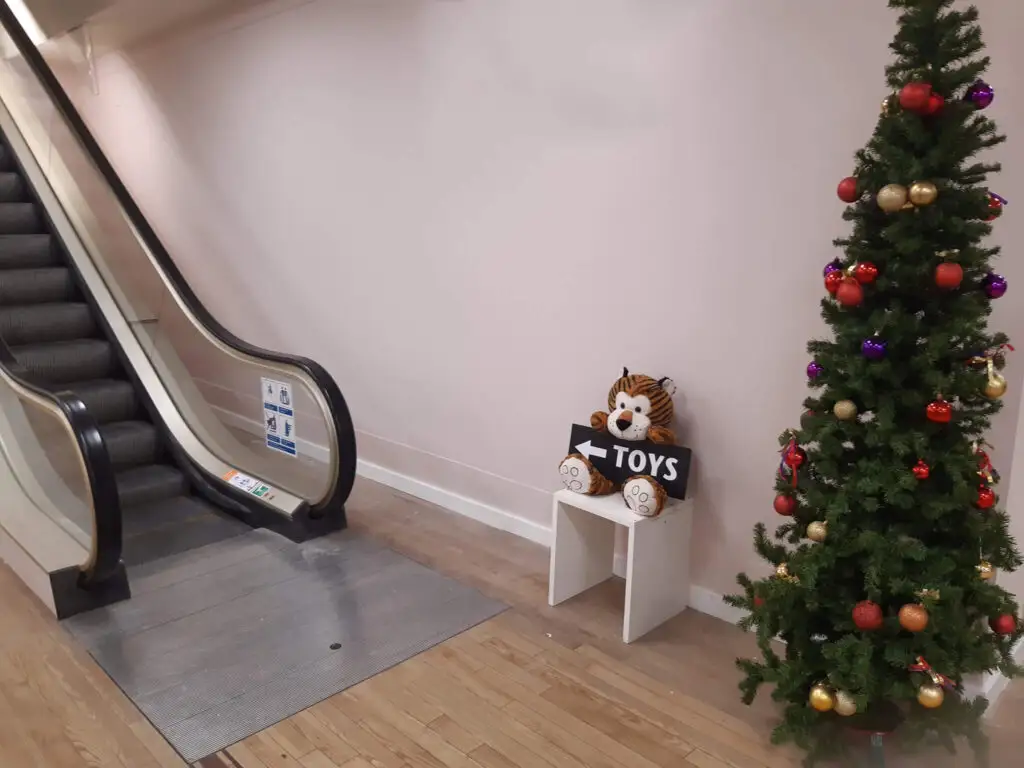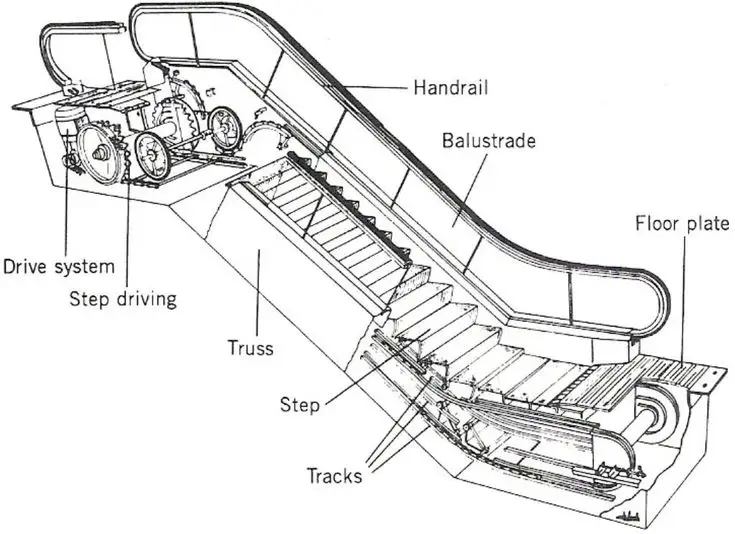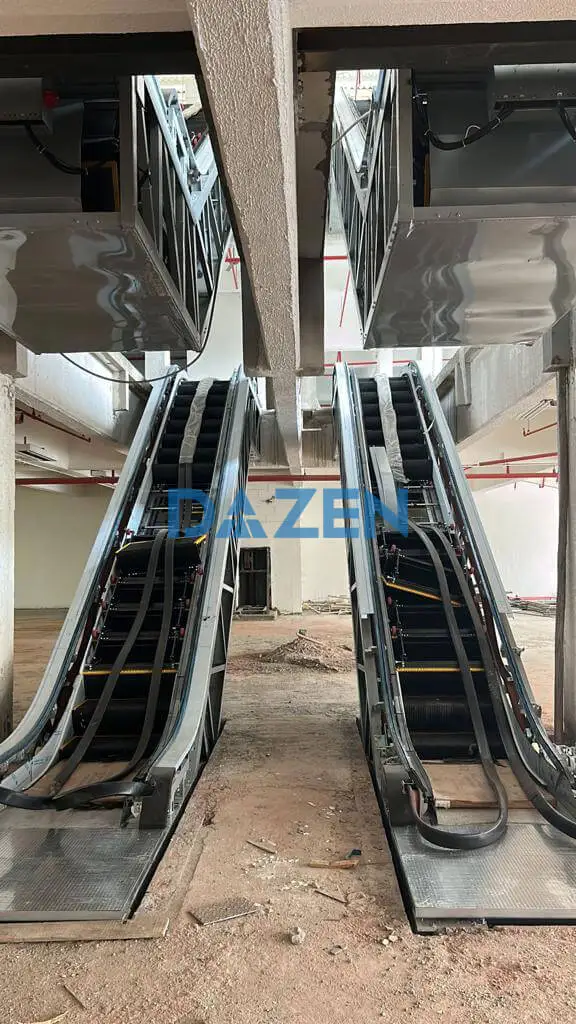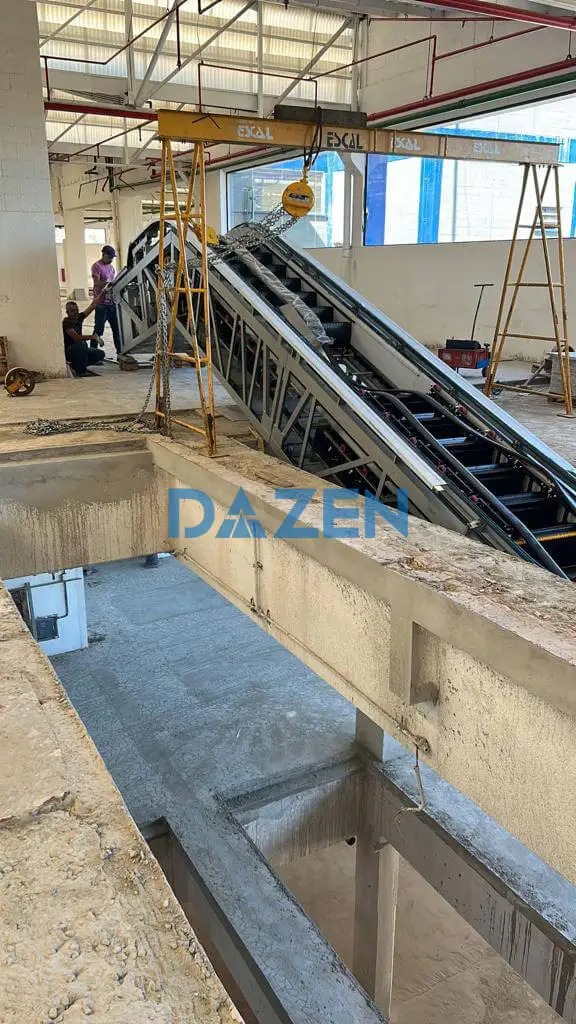How Much Does Home Escalator Cost?
A home escalator is a moving staircase that moves up and down to take you to the floor it connects. It’s an intelligent option to make it easy to move around multi-story buildings. It’s a convenient way to move for older people, children, and people with disabilities.
The ideal width of a home escalator may vary from 60cm, 80cm, and 100cm. You can choose from these dimensions depending on the space available. However, home escalators are generally small and may cost between $15,000 to $30,000.
The price may vary between $25,000 and $40,000, including installation charges. The cost of home escalators may exceed this budget if you require luxury finishes for escalators to match the home decor. dazen is a trusted name for commercial and residential escalators. Contate-nos for an accurate estimate for your home escalator.

Contact a Dazen escalator expert for your home escalator project! Click here!
Types of Home Escalators
Your budget depends on the type of escalator you choose for your home, so you should start by deciding on the kind of escalator you want to get installed. Also, the bigger the elevator, the more the cost will likely be, regardless of your chosen type. Here’s a round-up of the various types of elevators and their differences.
Manual
Manual escalators have relatively simple mechanisms with handrails that are present in synchronization with the steps. A manual handle is often located at the top or bottom of the escalator. When an operator drives the handrail in a circular motion, it causes the steps to move.
Unlike hybrid and automatic escalators, manual ones require an operator to move the handrail and the stairs along the path constantly. This form of escalator is least common today and demands a lot of physical exertion.
Automatic
Automatic escalators are run by the motor and gear system, usually located under the steps. Two parallel tracks are present, one in the ascending and the other at the descending side parallel to the metal stairs. The drive chain transmits the energy from the motor to be used to move the handrails, which then transfer the staircase.
When the escalator is turned on, the motor starts producing power to move the handrails, hence the escalator continuously. Automatic escalators are equipped with motion sensors and other safety features. They detect when the passenger steps on and off and start moving or stopping accordingly.
Hybrid
Hybrid escalators are the latest advancement in technology, offering energy efficiency and convenience. It combines the properties of a conveyor belt and an escalator in one unit, offering horizontal and vertical movement. A portion of the escalator consists of the elevator steps, and the other consists of a moving walkway.
These escalators have sensors that enable them to stop or alter their speed according to the passengers’ needs. For example, if a passenger walks on the moving conveyor belt, the escalator will try to match his speed. It will stop when there are no passengers. By turning off its movement, it saves energy consumption. Therefore, hybrid escalators are a better alternative to traditional ones.

Main Functions of Home Escalator
A normal escalator has various components that work together to ensure continuous and safe system movement. Let’s have a look at the various components of a home escalator and their function:
Speed Control System: The speed of the regulator is managed and controlled by the speed control system. It adjusts speed based on the passengers’ load to offer a smooth experience.
Safety System: The safety system manages the various parts of an escalator to prevent accidents, including handrail speed and step alignment.
Counter: It keeps a track of the passengers getting on and off the escalator. This allows to save energy and stop while there are no passengers.
Automatic Stop System: This is a useful button that can be used in case of irregularities to stop the escalator to ensure passenger safety.
Emergency Notification System: The emergency notification system sets off alarm signals or notifications in an emergency situation to alert the passengers and the house owners. LED Lighting LED lighting offers visibility to the passengers using the escalator to avoid possible accidents.

Home Escalator Installation Process
Installing a house escalator is a complex procedure that should be entrusted to qualify and experienced companies such as Dazen Elevators. We have provided thousands of customers with home and commercial elevators and escalators in the past few years.
We abide by the quality and safety standards to offer you a safe experience. Below is a general guideline that most companies follow when installing home escalators:
1. Site Assessment
The engineers do a thorough assessment to note the location measurements. They also record other specifications needed for the installation.
2. Planning and Designing
Drawings are made according to the measurements taken from the site. They make sure the elevator matches the safety standards and fits with the building’s structure.
3. Setting up the Foundation and Pit Construction
After the planning, it’s time for the implementation of the plan. At this stage, foundations are built, and structural modifications are made to install the elevator. This procedure involves digging a pit for its machinery.
4. Components are Delivered and Installed
Various components of the escalators, such as handrails, machinery, steps, and trusses, are delivered to the site for installation at the respective places.
5. Alignment Check
After the installation of the parts of the escalator, the engineers check their alignment and connection to prevent any health hazards.
6. Control System Installation
After the installation of components, the control system is installed. It includes control panels, wiring, sensors, and an emergency button.
7. Testing Phase
After the complete installation of the system and components, the escalator runs through a test drive. This is to check the smooth operation of its various parts and to rule out any possible problems.
8. Certification
After the installation and test phase, the escalators must undergo safety inspections to get the certifications needed to start operating in the building.
9. Training
The household staff and members are educated about how to operate the escalator. A vital part of this training is to inform the members of the emergency stop button to prevent accidents, after which it’s given the go-ahead for usage.


Benefits of Installing an Escalator in Your Home
Future-proofing is vital if you own a property, and what better way to do this than by installing a residential elevator? You’d want to be able to explore the house as you grow old, and installing home escalators can help you do so. There are also several other benefits that you can reap, which are as follows:
Ease of Movement
By installing a home escalator, you can make it easy for kids and older people to move around the floors. If you have a family member suffering from a disability, then a home escalator can be a big help in improving his mobility.
Improves Accessibility For All
Having an escalator at your home makes it easy for all the family members, including kids and elders, to move around the floors.
Offer Convenience & Safety
Staircase accidents are prevalent in every household and can cause serious injuries. Home escalators can turn off automatically and reduce the chance of slipping, tripping, or falling.
Time-saving and Convenient
Changing the setting of your home can be difficult if you live in a multi-story villa. By installing escalators, you can easily move furniture around the house.
Increases the Value of Your Property
Installing a home escalator uplifts the value of your house as you are making an additional investment. You can get a return on this investment if you wish to move to a new place.
Increase Independence For Members
With a traditional staircase, you might have to assist the kids and elderly to move around the house. However, with home escalators, they can experience much more independence and move around the house without much help.
Why Don’t a Lot of Houses Have Escalators?
Even though installing escalators has several benefits, you’ll find only a handful of houses with one. The reason is the high installation and management cost compared to the traditional staircase, which adds to the expenses. Also, the added energy consumption will lead to an increase in the electricity bills.
Secondly, escalators require more vertical and horizontal space? which makes them unsuitable for typical households. Moreover, the installation process is also tedious and requires massive modifications.
These modifications may be easier to make when the house is being constructed. However, after the completion process, you may need to make additional changes to adjust the escalator. Also, most households prefer elevators over escalators as they are much more convenient and safe.
Making Your Final Decision
As already explained, an escada rolante is your answer to better mobility around the house with comfort. So, if you want to install an escalator in your home, Dazen Elevator will be your great choice. With an experienced team of experts and upgraded procedures, it offers both escalators and elevators at competitive prices.
